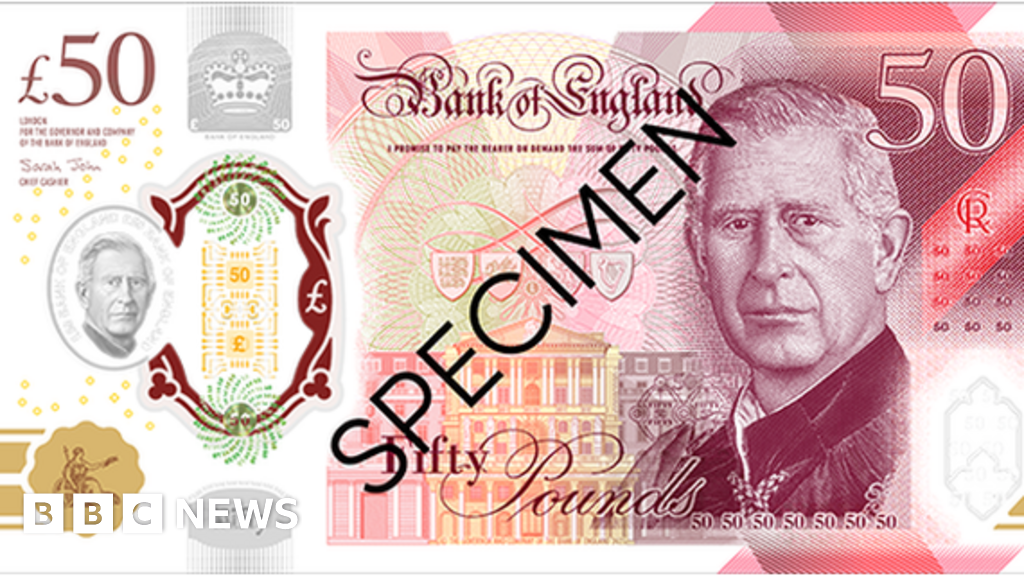In the world of numismatics, rarity and historical significance often drive value. This trend is evident in the recent surge of interest surrounding the first banknotes featuring the image of King Charles III. These notes, fresh off the presses, are already fetching prices up to 12 times their face value as collectors race to secure these early editions. The frenzy highlights not only the enduring appeal of banknote collecting but also the unique place these notes hold in British and Commonwealth history.
A New Era of Currency
The introduction of King Charles III’s likeness on currency marks a significant transition. Following the passing of Queen Elizabeth II in 2022, the Royal Mint and the Bank of England began the process of updating currency to reflect the new monarch. The first banknotes featuring King Charles III entered circulation in 2024, symbolizing the beginning of a new chapter in the United Kingdom’s financial and cultural landscape.
These early editions are particularly coveted because they represent a historic shift. It’s the first time in over 70 years that a new monarch’s portrait has graced British banknotes, making them a must-have for serious collectors. The notes have garnered widespread attention, not just within the UK but also internationally, as collectors and investors alike recognize their potential as valuable collectibles.
The Premium on Early Editions
Collectors understand the importance of securing early editions, especially when it comes to newly issued currency. The first batch of King Charles III banknotes is highly sought after, and the limited availability has only intensified demand. This scarcity is driving prices to impressive heights, with some notes selling for as much as 12 times their face value at auction and through private sales.
The allure of these banknotes goes beyond their monetary worth. For collectors, owning a piece of history is priceless. These early editions are expected to become even more valuable over time, particularly if they are kept in pristine condition. The premium prices paid for these notes today are likely just the beginning, as their rarity and significance continue to resonate with collectors.
What Drives Collector Demand?
Several factors contribute to the high demand for King Charles III banknotes. First and foremost is the historic nature of the transition. Banknotes featuring a new monarch are always significant, but the 70-year gap since the last change makes these notes particularly special. Additionally, the limited initial release adds to their desirability, as collectors seek to acquire them before they become scarce.
The design of the notes also plays a role. The portrait of King Charles III, carefully crafted to reflect both tradition and modernity, appeals to collectors who appreciate the artistry and craftsmanship involved in currency production. The notes are more than just legal tender; they are a reflection of the times and a tribute to the continuity of the British monarchy.
The Investment Potential
For investors, these early edition banknotes represent more than just collectibles—they are potential assets. The numismatic market has a long history of turning rare and historically significant currency into high-value investments. While the current premium of 12 times face value is impressive, it’s conceivable that these notes could appreciate even further as they age and as the supply dwindles.
Investors and collectors alike should consider the condition of the notes, as this will heavily influence future value. Uncirculated notes, particularly those with low serial numbers, are expected to command the highest prices. For those looking to diversify their portfolios with tangible assets, these King Charles III banknotes could prove to be a wise addition.
Conclusion
The debut of King Charles III on British banknotes marks a momentous occasion, and collectors are eager to own a piece of this history. The premium prices currently being paid reflect the significance of these early editions, both as collector’s items and as potential investments. As the world continues to watch the transition of the British monarchy, these banknotes stand as a symbol of continuity and change, and their value is likely to endure.
For collectors and investors alike, the opportunity to acquire these King Charles III banknotes at the beginning of their journey is a chance to own a piece of history—one that could appreciate in both financial and sentimental value over time.

Leave a Reply